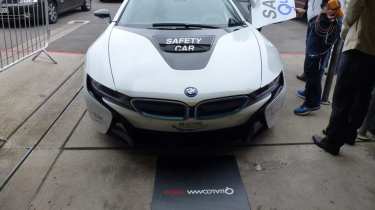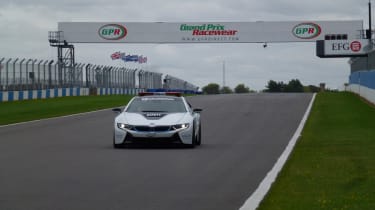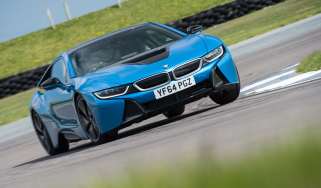'Game changing' Qualcomm wireless charging could feature on BMWs by 2017
Formula E's new i8 safety car previews a future of super fast EV charging
Formula E's latest safety car, launched at Donington Park, could preview a future of wirelessly-charged hybrid electric sports cars as soon as 18 months from now.
The electric championship’s newly-unveiled BMW i8 is equipped with the world's first 7.2kW wireless charger, the Qualcomm Halo, and arrives with the objective that the technology will appear on production car option lists by 2017.
Graeme Davison, Qualcomm's Vice President of technology, told evo that the system is essentially production-ready, and that the company is working with several manufacturers to introduce the technology into their model line-ups.
Fellow Formula E partner BMW refused to confirm whether it'd be the first carmaker to feature Halo, but Qualcomm did suggest it was at the front of three carmakers vying for first dibs on the wireless tech. While we can't confirm who the trio are, we do know Daimler and Tesla are two other major Qualcomm partners.
So how does Halo work? Drivers simply drive their vehicle over the charging pad – they don’t even have to be perfectly in line as the system has around 30cm of allowance. Induction coils in the charging pad and coils in the car form an electrical transformer when in close proximity – and the resulting energy can be used to top up the batteries.
It’s the use of the latest system’s 'double-D' coiling that’s enabled Qualcomm to more than double its efficiency, enabling it to charge the i8 Safety Car's 10kWh battery to 80 per cent in around 1-hour.
There's even scope for a more powerful 22kW charger to be fitted to the next Formula E safety car - Qualcomm says a 22kW charger could fill an i8's empty battery in as little 15 minutes, and perhaps more impressively, it could even fill the much larger battery of the all-electric i3 in less than an hour. Confirming that this tech actually works in practice is the all-electric Drayson Lola B12/69 EV prototype, which is already using a 20kW Qualcomm charger.
There’s even talk of charging on the move – wireless platforms that could be integrated into Formula E street track surfaces that charge the car as it travels along at high speed. Qualcomm is reportedly experimenting with this technology, but unsurprisingly, it’s still some way off being able to charge cars at full race pace. Nevertheless, it previews a future of wireless charging technology that could work on the road.
Formula E has provided Qualcomm with the perfect opportunity to promote its potentially groundbreaking technology on a global platform. When its tech makes it to production cars, it could transform the world of hybrid- and fully-electric motoring. And with battery development expected to improve rapidly once teams are given free rein (which could be as soon as next year), electric motor power and efficiency should drastically increase.
Whether you like electric racing or not, there’s no denying the potential Formula E has to send electric vehicle technology rocketing forward. And with evo-worthy cars like the BMW i8 as beneficiaries, surely that’s a good thing for all of us…







